#julia legare
Explore tagged Tumblr posts
Text


I recently visited the Legare mausoleum where a Julia Legare was buried alive on Edisto island in SC. It's said she succumbed to an illness that made her appear as if she was dead. But after being entombed she woke up, and finding herself trapped in the mausoleum, tried to escape to no avail. Several years later they opened the family tomb to bury her brother only to find her corpse right at the door. Scratches were found on the door where she tried to escape. Over the years the church had problems with the mausoleum door coming open no matter what they did to keep it closed so in the end they decided to remove the door so that her spirit could finally be free.
While standing before the door of the mausoleum I felt a sense of heaviness. You could feel the sadness in the air.
0 notes
Text
Rebeca Oquendo de Subercaseaux (1847-1941) pintora peruana.

Nació en Lima. Hija del matrimonio entre el Dr. Manuel José Oquendo y Melchora Días, María Julia Rebeca Oquendo Días nació en Lima el 20 de mayo de 1847. Siete días después era bautizada en la Parroquia del Sagrario y con ello era encaminada a la vida religiosa, de tanta relevancia en sus últimos años de vida.
Su familia, poseedora de prestigio y poder adquisitivo, se trasladó a Francia tres años después del nacimiento de su primogénita, estableciéndose allí definitivamente. Es allí donde Rebeca y su hermana menor Sara recibieron sus primeras lecciones particulares, entre las que figuraban clases de baile, bordado, música y dibujo.
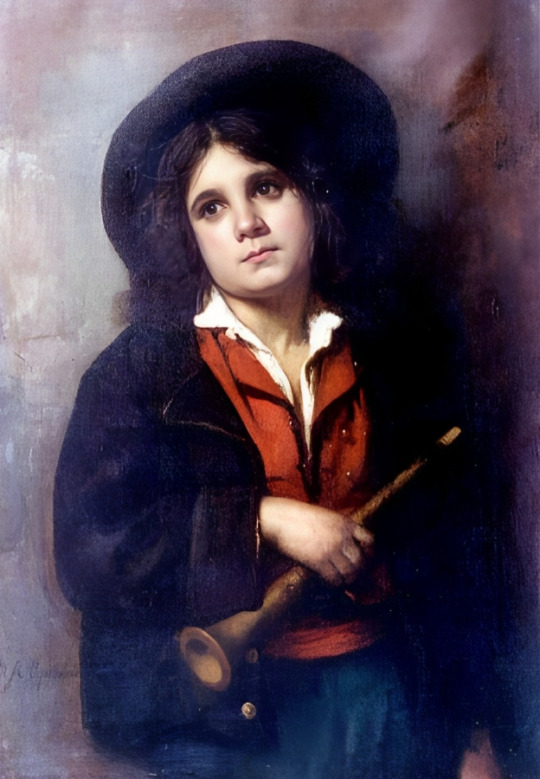
A pesar de que tuvo un primer acercamiento a la música, fue el dibujo y la pintura los que la cautivaron. Es así que, a la edad de 17 años, inició su aprendizaje pictórico siendo discípula del artista francés Jean-Baptiste Ange Tissier.
Durante la década de 1870, Rebeca Oquendo exhibió obra tanto en París como en Lima. En su ciudad natal envía lienzos a la Exposición Nacional de 1872 en la que destacó con El viejo republicano —acabado retrato de fuerza expresiva en la mirada de un anónimo hombre— que le hizo acreedora a una medalla de plata y un año después a una mención honrosa en el Salón parisino.

Por esta misma época su nombre es incluido en el Diccionario Biográfico Americano de José Domingo Cortés publicado en París, en 1876.
También por estos años contrae matrimonio con el ciudadano chileno, Joaquín Subercasaux, de cuyo enlace nace un hijo, Enmanuel. No obstante, la unión no prosperó y para 1878 Rebeca y su padre viajan a Chile, probablemente, para resolver asuntos legales de la pareja.
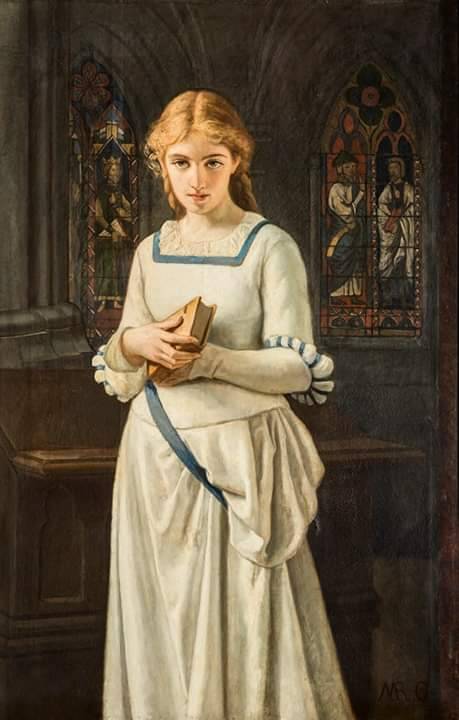
La cercanía a su tierra natal y quizá curiosidad al haber partido de ella a tan temprana edad hicieron que padre e hija viajaran al Perú antes del regreso a Francia. Su estancia fue dilatándose hasta que el inicio de la Guerra del Pacífico los sorprendió y con ello también la pérdida de bienes familiares que quedaron reducidos a tres inmuebles, uno de ellos la conocida Casa Osambela. En este lugar, años después, fue donde la artista impartió clases de dibujo y pintura a señoritas de sociedad, quizá como entretenimiento, pues no se ha localizado ningún aviso periodístico ofertando sus servicios como profesora.
Su última participación pública es en la década final del siglo XIX cuando exhibe dos obras en la Exposición de 1892, organizada por el Concejo Provincial de Lima para conmemorar el IV centenario del encuentro de dos mundos.
Dichas pinturas eran una Cabeza de anciano y un Aldeano romano —esta última recibe la atención de la prensa cuando comentan que el cuadro representa en tamaño natural a un niño de la campiña de Roma.
Aunque se desconocen los motivos por los que decidió quedarse en el Perú, Rebeca permanece en su país natal hasta el final de sus días. Varios años antes, en 1928, decide legar al Perú cinco óleos y lo hace donándolos al entonces Museo de Historia Nacional. Los lienzos Bambino napolitano, Margarita, Marquesita, Retrato de Sara Oquendo y Viejo republicano fueron elegidos por la pintora para ser custodiados por la institución. Gracias a ello su nombre ha permanecido en la historia del arte peruano como casi la única pintora del siglo XIX.
En sus pinturas predomina la figura humana en la que una minuciosa pincelada hace destacar expresivos rostros y acabados detalles en la vestimenta.
Asimismo en sus telas, que suelen ser de pequeño a mediano formato, es posible observar una paleta que destaca por el uso del negro y el rojo, algunas veces en profundos contrastes marcados por el claro oscuro.
Por voluntad propia, Rebeca pasa sus últimos años de vida en soledad, acompañada únicamente por su guía espiritual, un padre franciscano, pues ella consideraba que para “vivir feliz, vivid apartado”. Fallece a la edad de 94 años.
Es la artista más reconocida de ese periodo gracias a la donación que hizo, en vida, de cinco de sus pinturas al actual Museo Nacional de Arqueología, Antropología e Historia del Perú.
Le ponemos cara.
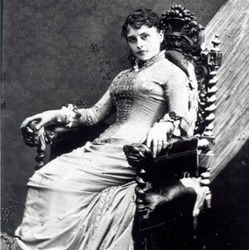
0 notes
Text
Buried alive in South Carolina
In South Carloina there is a legend about Julia Legare, who fell into a coma and was mistakenly buried alive. Years later, her remains were found outside her casket in the mausoleum. It is believed that she woke up, escaped from her coffin, but was trapped inside the burial chamber. To this day, a stubborn crack appears in the door of the mausoleum, and no matter how many times the door is replaced, the crack keeps coming back.

0 notes
Text
How many cryptids/urban myths do y'all have in your states?
Mine has nine.
#I'm interested to see#cryptids#there's the Lizard man#Crybaby bridge#the Third Eye Man#the Boo Hag#The Ghost Hound of Goshen#Julia Legare#The Baynard Crypt#Folly Island#and 15 people have seen Bigfoot
16 notes
·
View notes
Text


#edisto island#julia legare#south carolina#these haunted hills#ghostcore#ghost and hauntings#haunted#ghost and spirits#haunting#real ghost photos#ghost#ghost story
8 notes
·
View notes
Link
6 notes
·
View notes
Audio

#11: The Hoosac Tunnel and The Tomb of Julia Legare
[Download Audio] | [Apple Podcasts]
This week it's a creature double feature when Patrick and Jillian dip into some spooky urban legends that have been plaguing their respective states. First up is The Hoosac Tunnel in western Massachusetts, which is a haunted hotspot for strange activity. Then, we dip into the low-country with The Tomb of Julia Legare, which is the bizarre story of a woman who was possibly buried alive and now her spirit prevents the mausoleum door from ever closing. Plus, another wacky appearance by our podcast scientist, Jay!
Follow our Twitter: @redwinemystery Join Our Facebook Group
#podcast#podcasts#supernatural#mystery#the hoosac tunnel#ghosts#julia legare#new england ghosts#new england#ghost stories#hauntings#south carolina ghosts
1 note
·
View note
Text
Rudolf Nureyev : una vita tra la luci ed ombre.

Rudolf Nureyev era tutt’altro dal gentleman che vogliono rifilarci i romantici e i nostalgici che magari lo hanno conosciuto per un quarto d’ora o che lo hanno incontrato in occasioni eleganti e raffinate, lui, una volta chiuso il sipario e spente le luci doveva fare i conti con immensi tormenti, paure, psicosi e un irreversibile rifiuto per qualunque ordine gerarchico tanto per strada, quanto in sala ballo o tra i conoscenti. Dopo una gioventù trascorsa tra le violenze psicologiche del comunismo nell’Unione Sovietica (1922-1991) e la chimera del sogno occidentale Rudolf dovette convivere con un eterno sentimento di rabbia e rivalsa tra le luci della scena e le ombre della notte.

Alcuni aneddoti che riguardano la sua vita lavorativa e quella privata sono venuti alla luce di recente sulla stampa estera e grazie alla pubblicazione di alcuni libri – ancora non tradotti in italiano – emerge un ritratto nuovo e disarmante della stella dell’est. Non che il pubblico fosse completamente all’oscuro riguardo il suo caratteraccio, al contrario, un vocìo costante circa i suoi diversi alter ego tra violenza e ribellione e dissolutezza c’è sempre stato, ma si tratta di un vocìo sommesso e timido, perché si pensa erroneamente di tradire la sua magnificenza divina ammettendo le sue debolezze umane.
Beryl Gray, 90 anni compiuti lo scorso giugno, prima ballerina inglese ad aver danzato al teatro Bolshoi e direttrice artistica dell’allora London Festival Ballet (oggi English National Ballet) dal 1968 al 1979 racconta, nella sua autobiografia, alcuni aneddoti della sua vita lavorativa con il grande ballerino. Nel 1977 invitò Rudolf Nureyev a creare per i suoi ballerini Romeo & Juliet, che ancora oggi resta la versione coreografica portata in scena dalla compagnia londinese. Nei suoi diari scrive: “Ogni giorno era diverso e imprevedibile […] come grande artista e produttore era fantastico, era fonte d’ispirazione per i nostri ballerini, ma detestavo il suo linguaggio volgare, la sua costante maleducazione e i malumori imprevedibili.”

Nel suo “For the love of dance” (Oberon Books, 2017) Beryl ricorda un’esibizione di Romeo e Giulietta in cui Nureyev “ha attaccato una delle nostre principali ballerine, Liliana Belfiore, imprecava furiosamente fino a prenderla a calci sul sedere così forte che ha lasciato il palco con grande dolore. Fu chiamato un medico che, dopo averla visitata, disse che il coccige era stato danneggiato e addirittura piegato dai calci”.

Beryl Grey: | 1953 Beryl Grey as Odile in Swan Lake.
Anche Simon Robinson, ultimo giovane assistente di Rudolf, racconta nel suo libro “A year with Rudolf Nureyev” (Quercus, 2013) di un uomo irascibile e volubile, pieno di ossessioni e rituali assurdi, capace di creare il vuoto intorno

Iniziò a lavorare per lui nel tour di The King And I, non sapeva nulla del balletto, e suppose fosse per motivi riguardanti lo spettacolo che Nureyev dovesse dormire in una stanza d’albergo con le finestre chiuse e il riscaldamento alzato al massimo, indossando una tuta di spugna sopra una felpa di Topolino. La vita di Simon al servizio del grande ballerino pare fosse durissima, ma nonostante i litigi e le discussioni furiose da cui Nureyev pretendeva di uscire sempre vincente, decise comunque di restare al suo fianco. “Non c’era mai motivo di discutere, discutere era una sfida e, poiché Rudolf non sbagliava mai, una sfida equivaleva al tradimento“, scrive Simon.

La rabbia e le frustrazioni che sembravano caratterizzare le sue giornate venivano poi incanalate e sublimate nelle esperienze notturne tra sesso promiscuo, risse ed esperienze al limite. Il suo difficile rapporto con il padre, che aveva sempre odiato in quanto ufficiale dell’Armata Rossa e decorato eroe di guerra che lui definiva “un brutale stalinista” e il non aver più visto la mamma per ben 26 anni se non in punto di morte in quanto le era stato vietato viaggiare dal regime comunista, lo avevano poi portato al categorico rifiuto di ricevere ordini, all’abitudine di sottomettere chiunque e tenere testa in qualsiasi situazione anche dove non c’era assolutamente bisogno di prevalere
separare la vita privata da quella pubblica e rendere giustizia al demone ribelle e irriverente che abitava dentro di lui

youtube
Nureyev rivisita il balletto classico, lo reinterpreta e rivoluziona il ruolo del ballerino, che mai più sarà el porteur della prima ballerina. Crea dei soli e crea ruoli aggiuntivi per il protagonista maschile. Ha avuto anche la capacità di esperimentare, quindi non solo di essere ballerino classico, ma anche coreografo, attore, direttore d’orchestra. Questa capacità e voglia di mettersi sempre in gioco, sempre alla prova, dimostra che non ci sono limiti ad un artista di quella caratura. Roberto Bolle in: Artists in Love. Rudolf Nureyev & Erik Bruhn (2016).

incarnava genio, perfezione e carisma ...
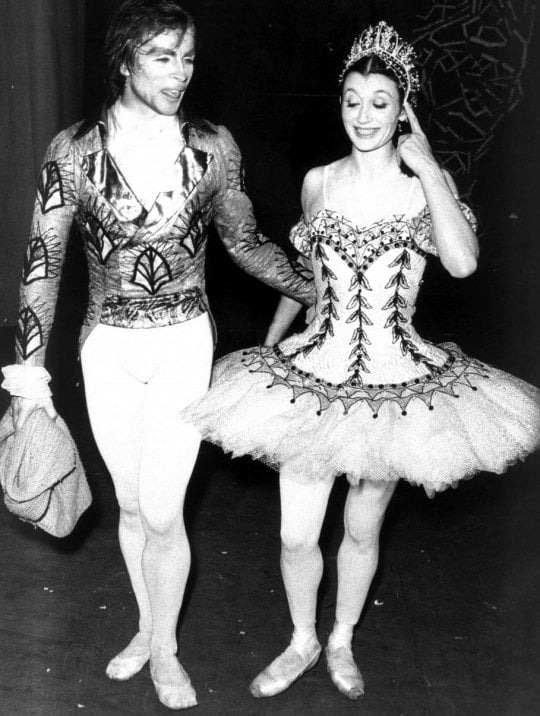
Un'altra sua magica partner fu Carla Fracci, con la quale formò una coppia indimenticabile. dalla sua casa di Milano, la ballerina italiana intende sfatarne la fama di divo arrogante: "In realtà era corretto e generoso", sostiene. "Poteva esplodere in sfuriate e dimostrare toni bruschi, ma sulla scena alimentava di energie meravigliose la sua partner. E io lo percepivo come un giovane fondamentalmente timido e tenero". Carla rammenta certe sue strane confidenze: "Mi raccontava di sognare spesso sua madre che saliva su una scala i cui gradini erano fatti di pane". Al suo fianco ballò i titoli più significativi del repertorio: "Facemmo Giselle, Il lago dei cigni, Coppelia, Don Chisciotte. Ma lo spettacolo al quale sono più legata è il suo Schiaccianoci, la cui coreografia è terribilmente impegnativa. Avevo a disposizione solo cinque giorni per imparare il ruolo. Stavo per rinunciare ma Rudy insistette per coinvolgermi, pur avendo a disposizione altre ballerine. Ci chiudemmo in sala-prove per ore e ore, e lui m'insegnò il balletto passo dopo passo con determinazione furiosa". L'esito fu un trionfo
Da fiero anticonformista, Nureyev ammirò Martha Graham, la capofila della "modern dance" americana, e ne volle danzare i perimetri angolosi: fu la prima star con un background classico che decise di viaggiare sui binari del contemporaneo. Dall'83 fino all'87 guidò la compagnia dell'Opéra di Parigi, a volte sfiancandola col suo atteggiamento dispotico. Ciò nonostante fu un direttore audace e preveggente, che scoprì e lanciò, all'interno dell'ensemble parigino, una generazione di talenti straordinari, tra cui spicca soprattutto Sylvie Guillem.


nella biografia di Julie Kavanagh
“Il ritmo era in ogni cosa: in quella vita disarmonica, nell’eccesso del movimento, nella curiosità inquieta. Nelle sue esperienze incastrate tra un oriente e un occidente che lui non riusciva a capire del tutto, ma nei quali viveva fuggendo e anche ballando, come se ballare fosse l’unica ricerca che veramente lo interessasse. La vita di Rudolf Nureyev è ciclica, è perfetta, è estetica pura e sofferta. È trasformazione. Non ci sono ripensamenti, c’è una spinta continua ad andare avanti, un’ansia di vivere che lui riusciva a placare soltanto danzando. Nella ciclicità e nella perfezione di una vita da artista, Rudolf Nureyev non poteva che nascere su un treno, sua madre era voluta partire nonostante tutto e mentre i vagoni viaggiavano lungo la ferrovia sovietica che lambiva il tramonto del lago Bajkal, nasceva lui. Unico figlio maschio “

Inizia così la biografia scritta da Julia Kavanagh uscita in Italia per La nave di Teseo e dal titolo “Nureyev. La vita”. Lo chiamavano il “ragazzo nato in treno” e in viaggio ha trascorso tutta la sua vita. Ogni cambiamento per lui è avvenuto in luoghi di attesa, in aeroporto a Parigi gli dissero che non poteva più far parte della compagnia, il Kirov avrebbe proseguito per Londra e lui no, a causa della nottata dissoluta trascorsa la sera prima nella capitale francese. Gli ordinarono di tornare a Mosca, lui preferì Parigi, rimase dall’altra parte dell’Unione sovietica, così divenne un traditore.
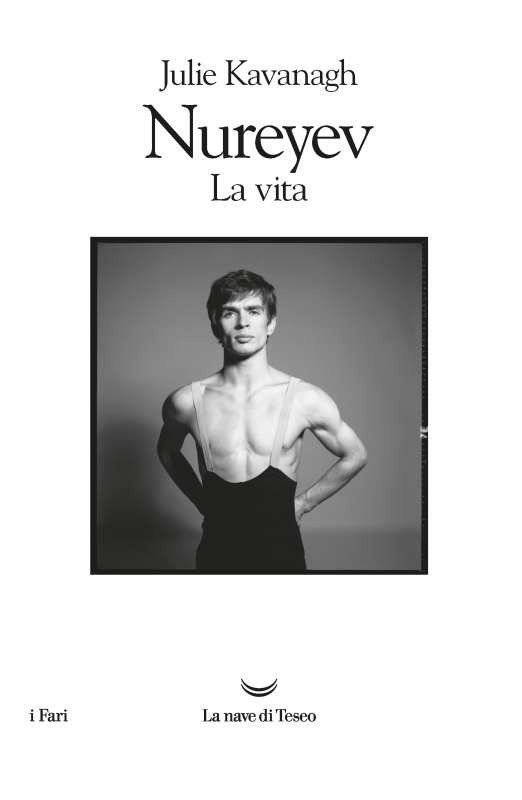
Nureyev: La Danza Tra Psicologia E Rivoluzione
Nureyev rivoluziona per sempre la danza europea, supera i paletti posti tra danza classica e moderna, combina le tecniche, rivoluziona la forma. Ricuce una serie di binomi che la tradizione occidentale concepiva come inevitabilmente scissi: mente e corpo, tecnica e anima. Elimina le parrucche, il trucco pesante, le gestualità barocche e ridondanti, tutti quegli orpelli di una danza europea divenuta ormai sterile e priva di anima. Rivoluziona il ruolo maschile nel balletto, tradizionalmente considerato un mero supporto, un accompagnamento ai passi della ballerina, fino ad allora considerata l’unica vera protagonista del balletto. Le dinamiche più profonde del rapporto tra uomo e donna vengono interpretate in chiave totalmente nuova sul palco. Con Nureyev il gioco a due sul palco diventa pura magia e l’assolo maschile spettacolo vero.
Il ballerino baschiro studia nuove tecniche di controllo corporeo e le insegna perché vuole portare la danza oltre le sue forme, per renderla capace di esprimere nuovi contenuti. Il cuore della danza di Nureyev diventa lo studio dell’espressione della psicologia dei suoi personaggi. La danza non è più solo esecuzione perfetta del movimento, ma diventa la più alta espressione interiore, una vera e propria ricerca intima e profondissima, quel ponte tra anima e corpo che la tradizione occidentale aveva per secoli nettamente separato.

Se la danza oggi rappresenta un filo capace di legare corpo e mente lo dobbiamo anche al genio e al talento ineguagliabile di Rudolf Nureyev, che ha saputo portare la forma del movimento ai suoi vertici per immergersi nel più profondo dell’animo umano.

Nureyev con la sua arte incise in maniera indelebile sui caratteri della danza maschile e non solo: egli si impose ovunque per «il virtuosismo brillante, l’espressività misurata e il carisma elettrizzante» con cui restituiva, attraverso un’attenta lettura del personaggio, nuova vita ai drammi che andavano sulla scena. Il ballerino seppe uscire dai canoni estetici della coreografia classica per toccare le vette di un’autentica forma di rappresentazione artistica ove, ad un’audace padronanza della tecnica, facevano seguito le prodezze di un gesto sempre attento, raffinato e sensuale, pieno di grazia e virilità, nelle cui forme lo spirito di Rudolf Nureyev sembrava librarsi al di fuori del tempo.

3 notes
·
View notes
Text
youtube
5 REAL Haunted Locations with Disturbingly Dark Back Stories...
Published on Jun 25, 2020
Join us on Patreon: https://www.patreon.com/Top5sOffical
We often show photos and videos of ghosts caught on CCTV or other devices that seem completely random with no history or explanation of why they might be there. So in this video, we are going to look at ghosts who are known to haunt locations around the world, that have heartbreaking backstories that may explain why their spirits linger...
Topics:
5. Lavinia Fisher, Charleston
4. The Ghost of Julia Legare, Edisto Island
3. Crazy Mary’s Hole in Pakefield, Suffolk, UK
2. Dead Woman's Crossing, Oklahoma
1. The Strange Case of Kate Morgan, San Diego
We want your stories! To submit any creepy personal stories or send in footage etc you may have caught over the years and can't explain, please email: [email protected]
Twitter - https://twitter.com/TheTop5s
Facebook - https://www.facebook.com/TheOfficialT...
Instagram - https://www.instagram.com/thetop5soff...
Music CO.AG - https://www.youtube.com/channel/UCcav...
Thanks for watching.
6 notes
·
View notes
Photo

Julia Legare Back in the mid-1800s, Julia Legare was visiting family on the island. She became ill and slipped into a coma. Her family anxiously awaited the day she would wake up, but that day never came. The family physician declared the young girl dead.
The child was lovingly dressed for her funeral where loved ones would pay her one last goodbye
or so they thought.
In those days, long before the deceased were treated with embalming fluids to preserve the body before burial, the ceremonial activities surrounding death were conducted at a rapid pace in order to avoid the inevitable decomposition. Poor Julia was buried on the same day of her death after loved ones had a chance to pay their respects.
Her little body was taken from the church and interred in the family's mausoleum. After she was placed inside the crypt, the marble door was closed, and securely locked, providing a sense of finality to the tragic death of the child.
Julia's family went on with their lives as best as they could after suffering the loss of a child so young and in time the pain of her death was replaced with happy memories from her life.
After 15 years had gone by, another death in the family required the mausoleum to be opened. It was then that the family realized what a tragic error they had made.
Julia's remains, which had so long ago been entombed, were crumpled at the foot of the mausoleums door. She had been buried alive.
It is thought that her respiratory and heart rates had dropped so precariously low that they were undetectable by the familys physician and so he declared her dead. When she was interred that fateful day, she was merely in a coma, and not dead. This led to the horrible realization that she had woken up in her own tomb next to the entombed remains of long-dead family members where she was unable to escape and had to wait for her actual death to come and free her of the terror she had woken up to.
The girl's remains were entombed once again, as were those of the relative whose death led to the grim discovery, and the door was securely closed once again.
Still reeling from the horrible discovery at the mausoleum, the girl's family members visited cemetery to pay their respects. When they did, its door was open.
Thinking that the open door had to have been the result of being improperly secured at the recent funeral, they shut the door again, and walked away.
A few weeks later, a clergyman at the church saw that the door was open and ordered it to be closed. This happened again and again and again throughout the decades. Chains and unbreakable locks were used to keep it sealed tight, but they would always break and the door would open. As little as 50 years ago a door was put on that could only be removed by industrial heavy machinery and that door was also opened (little Julia must have been particularly mad at that door because it was not only open but completely unhinged from the mausoleum).
That's when everyone gave up trying to close the door. To this day, the original door is nothing more than broken marble that sits in the grassy doorway to the tomb.
Now that there is no door to the J.B. Legare mausoleum, it is thought that Julia's spirit can rest. But there are still some who say that she guards the mausoleum just to make sure that nobody dare get the notion to put a door back on the very building that killed her all those years ago.
-retold by Bob Hart
#Julia Legare#south carolina#southern gothic#buried#alive#entombed#gothic#legend#folklore#americana#edisto island#haunting#ghost stories
0 notes
Text
South Carolina: The Death of Julia Legare

South Carolina: The death of Julia Legare
In the 1800s, the Legares were a well to do South Carolinian family that had homes on the mainland and on Edisto Island. The daughter, Julia, got sick, was pronounced dead, and buried inside their family mausoleum.
Years later, another member of the Legare family died, and when their tomb was opened up, the remains of Julia were found outside of her coffin. The story says that Julia had been in a coma, and had woken up to try to escape her tomb, but sadly died.
After the first re-opening of the Legare mausoleum, the door can't seen to stay shut. The Legares tried multiple different doors, and every single time the door was found open. People believe that the ghost of Julia didn't want to be locked in that tomb any longer.
3 notes
·
View notes
Text
The Story of Julia Legare-Edisto Island, South Carolina
The Story of Julia Legare-Edisto Island, South Carolina
The graveyard next to the Presbyterian Church on Edisto Island is the location of one of South Carolina’s most famous ghost stories. The story is shared that at 22, Julia Seabrook Legare died of diphtheria and was buried in her husband’s family tomb. A few years later, her brother passed away, and when they opened up the tomb, a pile of bones was found inside of the tomb. The belief was that…

View On WordPress
1 note
·
View note
Photo










Edisto Island Presbyterian Church - South Carolina
The congregation was founded in 1685 and the current church building was constructed in 1831. The cemetery includes the open crypt of Julia Legare, a little girl who was reportedly accidentally buried alive. Local legend states that her claw marks can still be found on the walls of this purportedly haunted mausoleum.
3 notes
·
View notes
Note
podem me dizer o mwfc pocs de vcs?
Olá, anony!
Nós separamos em sexo e etnia para ficar mais fácil. Não colocamos latines especificamente, uma vez que é um grupo étnico muito miscigenado, mas, se quiser, só mandar outra ask que colocamos. Também não colocamos pessoas de ascendência indígena por ser algo difícil de se encontrar, mas, caso queira, nós vamos atrás, certo?
FEMININOS: Negras: Leigh-Anne Pinnock (Little Mix), Tinashe, Normani, Megan Thee Stallion, Iza, Zendaya, Zoë Kravitz, Kiera Please, Keke Palmer, China Anne McClain, Chloe Bailey, Halle Bailey, Ryan Destiny, Doja Cat, Jorja Smith, Kehlani, SZA, H.E.R, Yara Charry, Gabz (@ehagabz), Winnie Harlow, Leyna Bloom. Asiáticas de pele marrom: Shivani Paliwal (Now United), Jane de Leon, Julia Barretto, Asia Jackson (negra + filipina), Chaleeda Gilbert, Lisa (Blackpink), Loisa Andalio, Priyanka Chopra, Aishwarya Rai, Janvi Kapoor, Taria Sutaria, Pevita Pearce, Deepika Padukone, Mishti Raman. Asiáticas de pele amarela: Hyuna, Yebin (DIA), Ambz (@bbyambi), Miru Shiroma (NMB48), Juri Takahashi (Rocket Punch), Kim Yeonhee (Rocket Punch), Tifanny Young, Jurina Matsui (SKE48), Wang Yiren (Everglow), CL, Nana Komatsu, Meng Ziyi, Xuan Lu, Cheng Xiao (WJSN), Bona (WJSN), Chae Soobin, Im Jinah, Natalie Notenboom, Yumi Notenboom. MASCULINOS: Negros: Daniel Caesar, Frank Ocean, The Weeknd, Michael B. Jordan, Han Hyunmin (negro + coreano), Rickey Thompson, Kendrick Sampson, Rome Flynn, Jaxon Rose, Jordan Fisher, Stephane Legar, Jason Derulo, Lil Nas X, Derrick Appiah (@derrickappiah), Idris Elba, Désiré Quadjo Mia. Asiáticos de pele marrom: Max Nattapol Diloknawarit, Enrique Gil, Tul Pakorn, Daniel Padilla, James Reid, Rami Malek, Iqbaal Ramadhan, Rahul Kohli, Dev Patel, Zayn, Avan Jogia, Win Morisaki. Asiáticos de pele amarela: Wang Yibo (UNIQ), Cho Seungyoun/Woodz (UNIQ), G-Dragon (Big Bang), Roh Taehyun (Hotshot), Dean, Seo Kangjoon, Yuto (Pentagon), Miyavi, Yuta (NCT), Lin Yanjun (Nine Percent), Yao Mingming (Unine), Xiao Jun (X Nine), Lay (EXO). NÃO-BINÁRIOS: Negres: Lizzo, Quintessa Swindell, Key, Indya Moore, Keiynan Lonsdale, Asiátiques de pele marrom: JayR Tinaco. Asiátiques de pele amarela: Jo Kwon, Ian Alexander. Caso tenha alguma preferência específica por idade/nacionalidade ou precise de algo mais, sinta-se livre para mandar mais asks!
- Equipe Nemeton.
1 note
·
View note
Text
Julia Legare
A few years ago I was spending some time with friends exploring old, supposedly haunted, places. We were at the Edisto First Presbyterian Church, where a girl named Julia Legare was buried in her family mausoleum in 1852.
People reported hearing unearthly screams time and time again, but never investigating the cause of it. Fifteen years later, when they opened the door to the mausoleum to inter the next family member who had died, they found her corpse huddled in the corner next to the door, arms outstretched as if still trying to find the exit.
Well, my friends thought it would be a funny idea to shut the giant stone door (which was originally open) behind me and pick me up in the morning. The bastards left me there… I tried and tried, using all of my strength, but I couldn’t budge the door. It had taken four people to put it in place. In the dark, I resigned myself to the night ahead of me.
Now, I normally don’t frighten easily, but sitting there in that relatively small space, surrounded by a looming pressure that I couldn’t begin to explain, the darkness itself seemed to consume me. From all around it felt like weight was pressing against my skin, making even breathing hard. I sat in the dark for what must have been hours.
Then I heard the scratches. They were faint at first, I was sure it was my imagination, but soon they became more and more frantic as time passed. I huddled up in one of the corners farthest from the door and tried to cover my ears but nothing could stop the growing cacophony. This all may have lasted for just a few minutes, but each second was an unbearable eternity.
Then, a loud scream echoed from the darkness – a wail of unrestrained pain and fear. The scratching stopped. For the first time I could distinctly make out the sound of a girl sobbing to herself, the pitiful gasping of one without a shred of hope left.
I felt such sorrow at that moment, such pain, that I think I forgot how to be afraid. In my heart all her suffering seemed to resonate. Inexplicably, I found myself apologizing aloud for everything that had happened to her. Hell, a part of me wanted to reach out and feel for a body to hug, but I couldn’t bring myself to do it for fear that I truly would find one.
I don’t know whether or not she heard me or was even aware of my presence. The sobbing continued and I could hear her fingers against the stone slab that was the tomb door.
I fell asleep at some point, which I felt was a merciful gift from the fates. I’m not sure how long I was out, but I was woken by a loud and powerful thud as the door slammed against the ground outside. I could tell from the light gray outside that daybreak was near, so I must have slept for at least a few hours.
I stumbled outside and went to a small unlocked prayer house. I think previously it was a segregated mini-church, but regardless I leaned against the door and waited nervously until my “friends” arrived. I approached them as they clustered around the fallen door, two of them kneeling next to it with faces of shock.
There were bloody streaks covering the interior of the door, some with light scratches from fingernails, many without. I think now that she must have shrieked when they broke away from her hands, but I can’t be sure.
At first, they looked to me and checked my hands, then nervously glanced at one another. I was rightfully pissed with them and told them every detail of what I remembered, wanting them to know what I had been put through.
Finally, after I grudgingly got into the car and we started to head back, someone spoke up. My friend said to me, “We were afraid to say anything, but look at your face.”
I later found out that many times people had tried to permanently seal the entrance to the mausoleum, including enough heavy locks and chains that it would require heavy equipment to move it, only to find it torn open with the door lying on the ground once more. This was in the 1980s, the last attempt of many through the decades. It seemed like some force was ensuring that it was impossible to ever repeat the mistakes of the past. This is something I am understandably quite grateful for, but to this very day I am chilled to the bone when I think of what happened that night.
When I reached from the back and adjusted the rearview mirror, I saw there was blood caked on my face. Just like the streaks upon the stone slab, there were dark red lines on either side, as if someone had gently cradled my face with torn fingers as I slept that night, feeling the warmth of another for the first time in over a hundred years.
1 note
·
View note
Text
La horrible muerte de Julia Legare
Nuestra historia comienza en la isla de Edisto, Carolina del Sur. Edisto cuenta con un interesante pasado que comenzó con los pueblos indígenas, seguido por los propietarios de plantaciones en la década de 1700. Julia Legare era una joven que visitaba la isla a mediados del siglo XIX. Durante su visita, enfermó gravemente y cayó en coma. Su familia estaba bastante preocupada, ya que su salud parecía disminuir rápidamente. Sin embargo, pasaron los días y ella nunca despertó. Un médico de familia declaró a Julia, que en ese momento estaba en su adolescencia, muerta.
La familia resistió la tragedia de la muerte prematura de Julia lo mejor que pudo. A medida que pasaron los años, la cripta familiar permaneció cerrada hasta que un día, unos quince años después, su hermano también murió a edad temprana.
La cripta familiar se abrió para enterrar a otro Legare y reveló una escena horrible: el esqueleto de Julia estaba apretado contra la puerta de la cripta, había evidencia de arañazos en las puertas y los pisos.
Comprensiblemente, su familia se horrorizó por los horribles acontecimientos que habían sucedido en los últimos días de Julia. Desde el día en que se abrió la cripta y se descubrió su cuerpo, fantasmas extraños invadieron el área. La puerta del mausoleo se encontraba abierta una y otra vez, hasta el punto en que los empleados del cementerio decidieron quitarla por completo, en un intento por apaciguar el último deseo de Julia: ser liberada de la cripta.
Esta leyenda, muy conocida en Carolina del Sur, sigue horrorizando a turistas y locales. De vez en cuando, algunos valientes organizan recorridos por el camposanto maldito. Se dice que si te acercas durante una noche de luna llena, podrás escuchar el eco de gemidos y arañazos que provienen del interior del macabro mausoleo.

1 note
·
View note